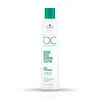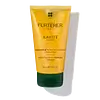What's inside
What's inside
 Key Ingredients
Key Ingredients

 Benefits
Benefits

 Concerns
Concerns

 Ingredients Side-by-side
Ingredients Side-by-side

Water
Skin ConditioningCocamidopropyl Betaine
CleansingLauryl Glucoside
CleansingSodium Lauroyl Methyl Isethionate
CleansingSodium Methyl Cocoyl Taurate
CleansingSodium Chloride
MaskingSodium Methyl 2-Sulfolaurate
CleansingCreatine
Skin ConditioningSoy Amino Acids
Skin ConditioningWheat Amino Acids
Skin ConditioningSerine
MaskingThreonine
Arginine Hcl
Skin ConditioningParfum
MaskingSodium Benzoate
MaskingDisodium 2-Sulfolaurate
CleansingCitric Acid
BufferingSodium Methyl Isethionate
EmulsifyingPhenoxyethanol
PreservativeLauric Acid
CleansingCoconut Acid
CleansingSodium Sulfate
Glycerin
HumectantC12-18 Fatty Acids Methyl Esters
PerfumingHydroxypropyl Guar Hydroxypropyltrimonium Chloride
Zinc Laurate
Trisodium Ethylenediamine Disuccinate
Linalool
PerfumingSodium Laurate
CleansingUrea
BufferingCitronellol
PerfumingAlpha-Isomethyl Ionone
PerfumingSaccharide Hydrolysate
HumectantPropylene Glycol
HumectantPEG-120 Methyl Glucose Dioleate
EmulsifyingGlycine
BufferingAlanine
MaskingMagnesium Aspartate
Skin ConditioningSodium Hydroxide
BufferingBenzyl Alcohol
PerfumingPotassium Sorbate
PreservativeWater, Cocamidopropyl Betaine, Lauryl Glucoside, Sodium Lauroyl Methyl Isethionate, Sodium Methyl Cocoyl Taurate, Sodium Chloride, Sodium Methyl 2-Sulfolaurate, Creatine, Soy Amino Acids, Wheat Amino Acids, Serine, Threonine, Arginine Hcl, Parfum, Sodium Benzoate, Disodium 2-Sulfolaurate, Citric Acid, Sodium Methyl Isethionate, Phenoxyethanol, Lauric Acid, Coconut Acid, Sodium Sulfate, Glycerin, C12-18 Fatty Acids Methyl Esters, Hydroxypropyl Guar Hydroxypropyltrimonium Chloride, Zinc Laurate, Trisodium Ethylenediamine Disuccinate, Linalool, Sodium Laurate, Urea, Citronellol, Alpha-Isomethyl Ionone, Saccharide Hydrolysate, Propylene Glycol, PEG-120 Methyl Glucose Dioleate, Glycine, Alanine, Magnesium Aspartate, Sodium Hydroxide, Benzyl Alcohol, Potassium Sorbate
Coco-Glucoside
CleansingLauryl Betaine
CleansingButyrospermum Parkii Oil
EmollientCocamide Mipa
EmulsifyingGlycol Distearate
EmollientAcrylates Copolymer
Benzoic Acid
MaskingCaramel
Cosmetic ColorantCitric Acid
BufferingParfum
MaskingGlycine Soja Oil
EmollientGlycine Soja Sterols
EmollientGlycolipids
Skin ConditioningGuar Hydroxypropyltrimonium Chloride
Skin ConditioningHexyl Cinnamal
PerfumingLimonene
PerfumingLinalool
PerfumingPhenoxyethanol
PreservativePhospholipids
Skin ConditioningSalicylic Acid
MaskingSodium Chloride
MaskingSodium Hydroxide
BufferingTrisodium Ethylenediamine Disuccinate
CI 19140
Cosmetic ColorantCI 15985
Cosmetic ColorantCoco-Glucoside, Lauryl Betaine, Butyrospermum Parkii Oil, Cocamide Mipa, Glycol Distearate, Acrylates Copolymer, Benzoic Acid, Caramel, Citric Acid, Parfum, Glycine Soja Oil, Glycine Soja Sterols, Glycolipids, Guar Hydroxypropyltrimonium Chloride, Hexyl Cinnamal, Limonene, Linalool, Phenoxyethanol, Phospholipids, Salicylic Acid, Sodium Chloride, Sodium Hydroxide, Trisodium Ethylenediamine Disuccinate, CI 19140, CI 15985
Ingredients Explained
These ingredients are found in both products.
Ingredients higher up in an ingredient list are typically present in a larger amount.
Citric Acid is an alpha hydroxy acid (AHA) naturally found in citrus fruits like oranges, lemons, and limes.
Like other AHAs, citric acid can exfoliate skin by breaking down the bonds that hold dead skin cells together. This helps reveal smoother and brighter skin underneath.
However, this exfoliating effect only happens at high concentrations (20%) which can be hard to find in cosmetic products.
Due to this, citric acid is usually included in small amounts as a pH adjuster. This helps keep products slightly more acidic and compatible with skin's natural pH.
In skincare formulas, citric acid can:
While it can provide some skin benefits, research shows lactic acid and glycolic acid are generally more effective and less irritating exfoliants.
Most citric acid used in skincare today is made by fermenting sugars (usually from molasses). This synthetic version is identical to the natural citrus form but easier to stabilize and use in formulations.
Read more about some other popular AHA's here:
Learn more about Citric AcidLinalool is a fragrance and helps add scent to products. It's derived from common plants such as cinnamon, mint, citrus, and lavender.
Like Limonene, this ingredient oxidizes when exposed to air. Oxidized linalool can cause allergies and skin sensitivity.
This ingredient has a scent that is floral, spicy tropical, and citrus-like.
Learn more about LinaloolParfum is a catch-all term for an ingredient or more that is used to give a scent to products.
Also called "fragrance", this ingredient can be a blend of hundreds of chemicals or plant oils. This means every product with "fragrance" or "parfum" in the ingredients list is a different mixture.
For instance, Habanolide is a proprietary trade name for a specific aroma chemical. When used as a fragrance ingredient in cosmetics, most aroma chemicals fall under the broad labeling category of “FRAGRANCE” or “PARFUM” according to EU and US regulations.
The term 'parfum' or 'fragrance' is not regulated in many countries. In many cases, it is up to the brand to define this term.
For instance, many brands choose to label themselves as "fragrance-free" because they are not using synthetic fragrances. However, their products may still contain ingredients such as essential oils that are considered a fragrance by INCI standards.
One example is Calendula flower extract. Calendula is an essential oil that still imparts a scent or 'fragrance'.
Depending on the blend, the ingredients in the mixture can cause allergies and sensitivities on the skin. Some ingredients that are known EU allergens include linalool and citronellol.
Parfum can also be used to mask or cover an unpleasant scent.
The bottom line is: not all fragrances/parfum/ingredients are created equally. If you are worried about fragrances, we recommend taking a closer look at an ingredient. And of course, we always recommend speaking with a professional.
Learn more about ParfumPhenoxyethanol is a preservative that has germicide, antimicrobial, and aromatic properties. Studies show that phenoxyethanol can prevent microbial growth. By itself, it has a scent that is similar to that of a rose.
It's often used in formulations along with Caprylyl Glycol to preserve the shelf life of products.
Chances are, you eat sodium chloride every day. Sodium Chloride is also known as table salt.
This ingredient has many purposes in skincare: thickener, emulsifier, and exfoliator.
You'll most likely find this ingredient in cleansers where it is used to create a gel-like texture. As an emulsifier, it also prevents ingredients from separating.
There is much debate on whether this ingredient is comedogenic. The short answer - comedogenic ratings don't tell the whole story. Learn more about comegodenic ratings here.
The concensus about this ingredient causing acne seems to be divided. Research is needed to understand if this ingredient does cause acne.
Scrubs may use salt as the primary exfoliating ingredient.
Learn more about Sodium ChlorideSodium Hydroxide is also known as lye or caustic soda. It is used to adjust the pH of products; many ingredients require a specific pH to be effective.
In small amounts, sodium hydroxide is considered safe to use. However, large amounts may cause chemical burns due to its high alkaline.
Your skin has a natural pH and acid mantle. This acid mantle helps prevent harmful bacteria from breaking through. The acid mantle also helps keep your skin hydrated.
"Alkaline" refers to a high pH level. A low pH level would be considered acidic.
Learn more about Sodium HydroxideTrisodium Ethylenediamine Disuccinate is used to help stabilize a product.
It is a chelating agent, meaning it helps prevent metal ions from binding to other ingredients. This prevents unwanted reactions in products. Metal ions can come into a product via the water ingredient. They are found in trace amounts and are not known to be harmful.